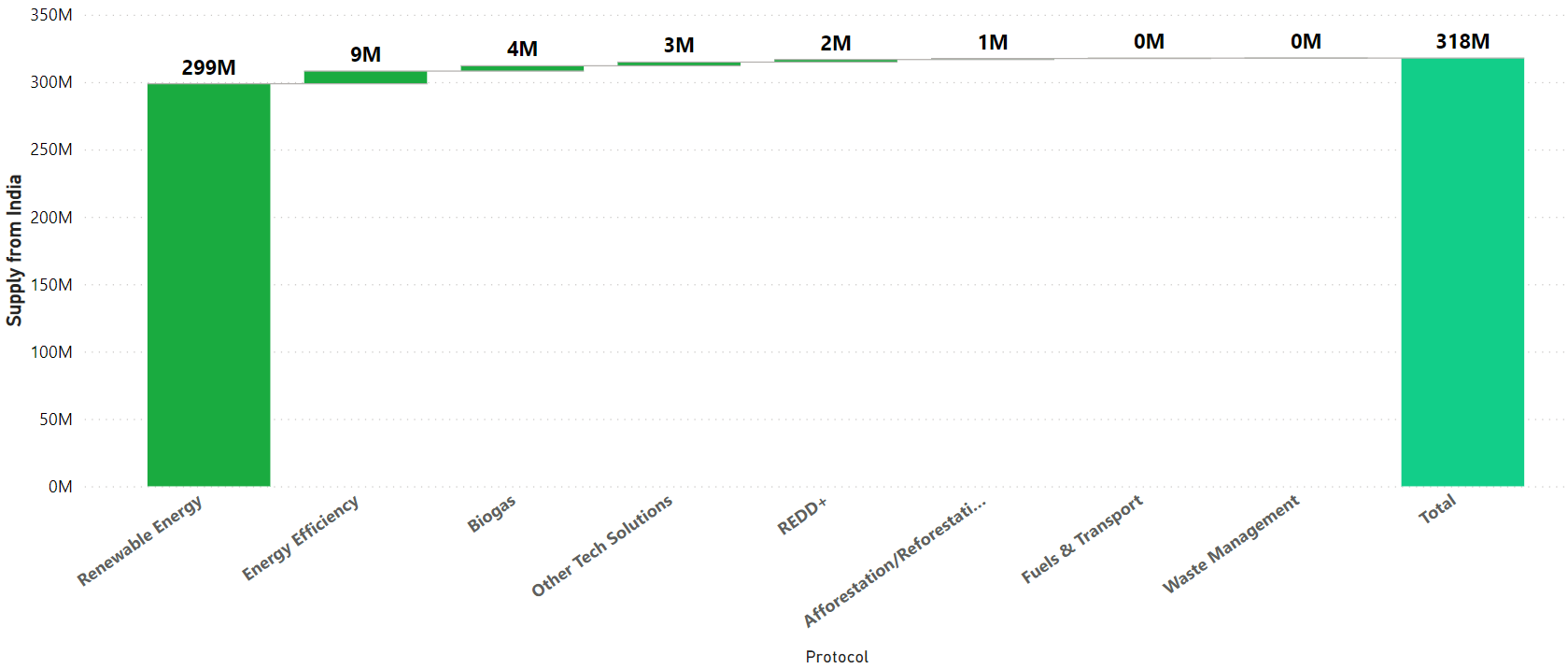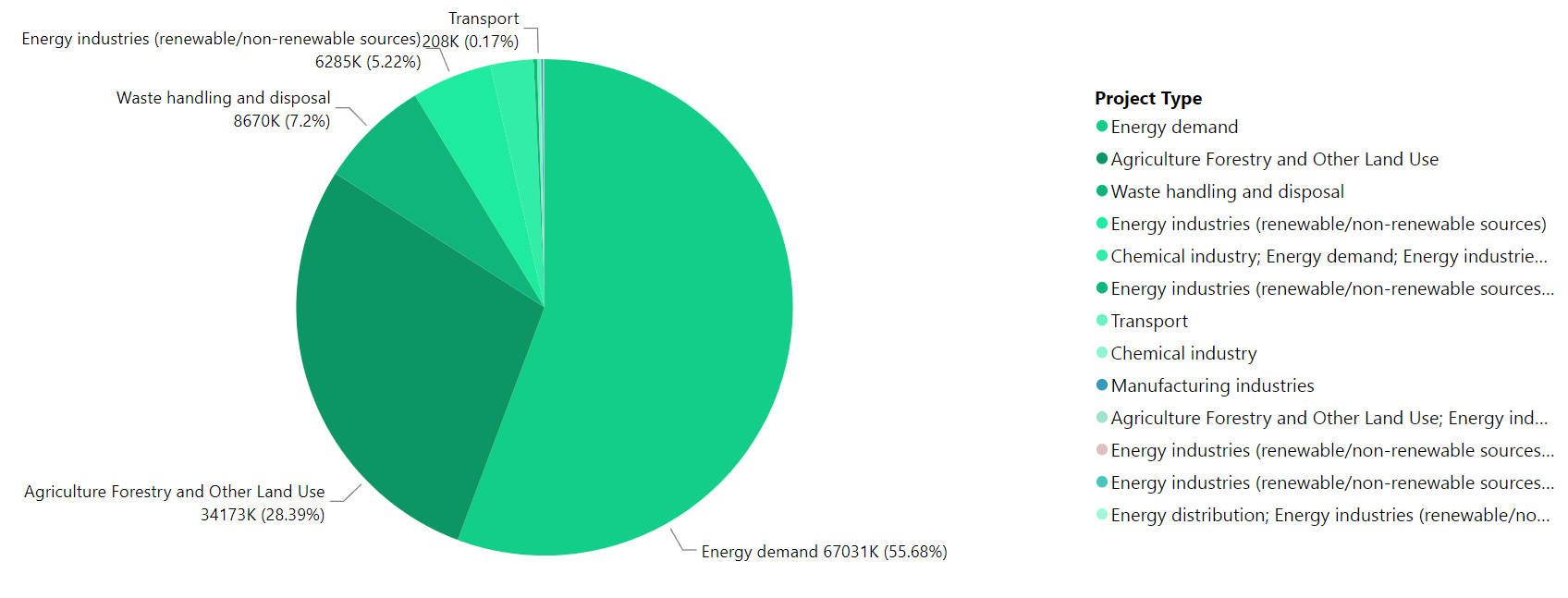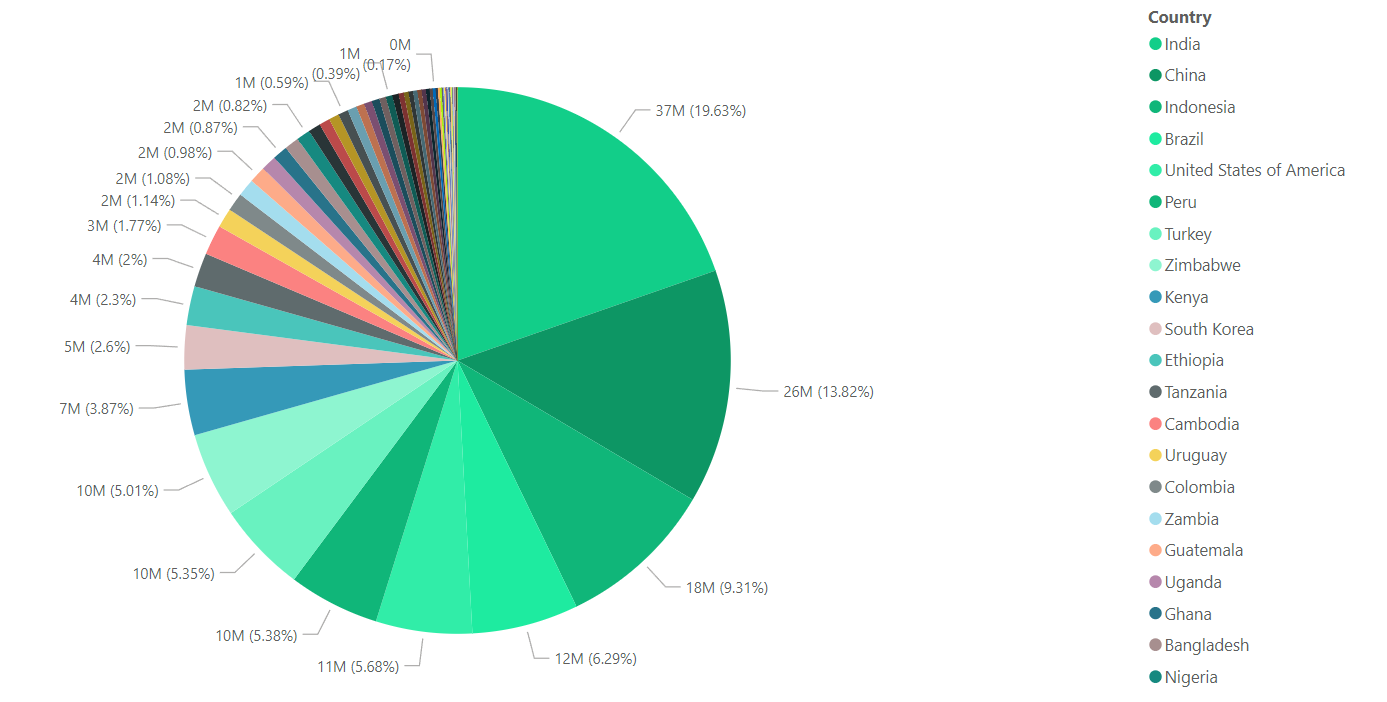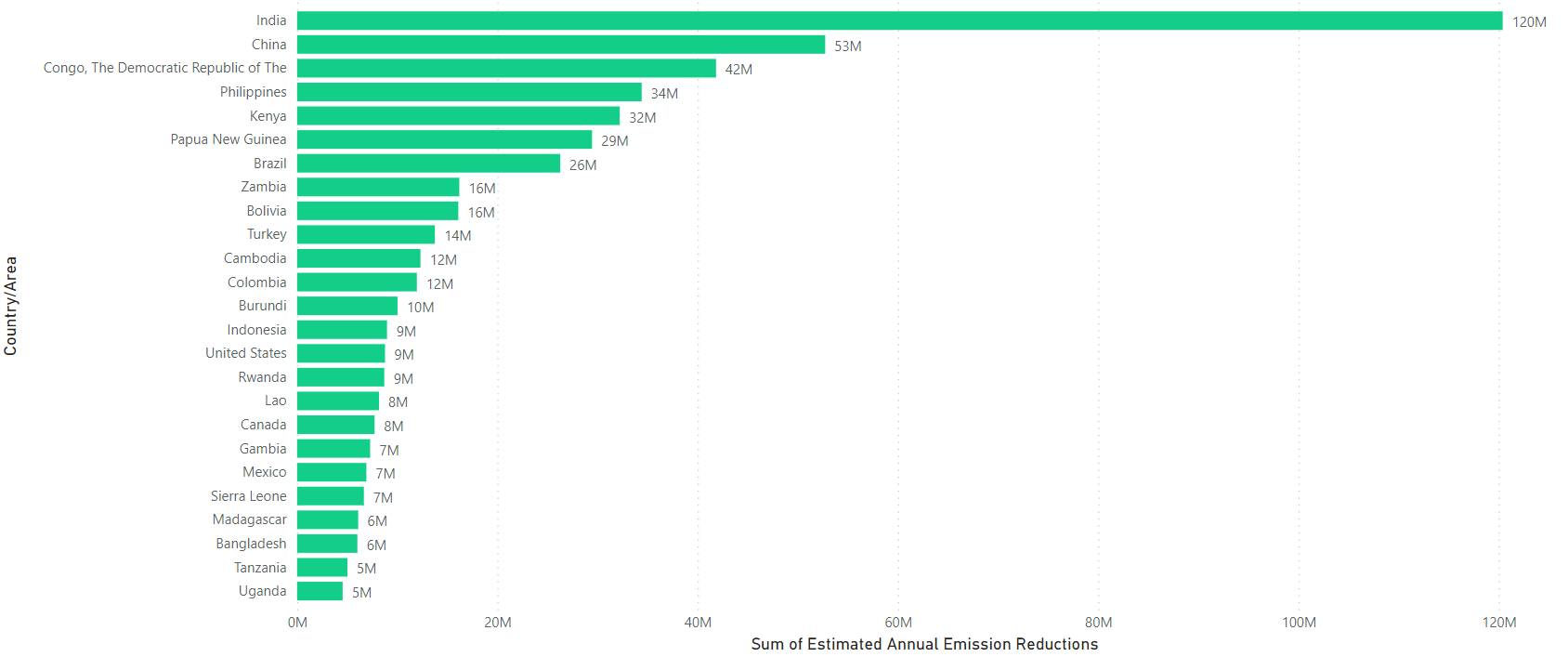Introduction
India has emerged as a frontrunner in the global pursuit of sustainability, with a strong focus on renewable energy and ambitious pipeline projects. Through its proactive measures, India is setting an example for other nations to follow. This article delves into India's journey towards becoming a global sustainability leader, analyzing key statistics and highlighting its progress.
Renewable Energy Dominance

Figure 1: India's supply w.r.t Protocols (Source - Calculus IQ)
Figure 1 showcases India's impressive track record as a major supplier of renewable energy. With a staggering 299 million units, renewable energy accounts for 94% of India's total energy supply to date. This significant emphasis on renewables aligns with India's commitment to tackle its largest emitter first - the energy sector.
By transitioning to renewable energy sources, India is actively working towards creating a sustainable and cleaner energy landscape.
Diverse Pipeline Projects

Figure 2: India's Projects in the Pipeline w.r.t Protocols (Source - Calculus IQ)
Figure 2 demonstrates India's future-oriented approach. The country has allocated 55% of its total pipeline projects to address energy demand, reflecting its commitment to ensuring a sustainable energy future. Following closely behind is agriculture forestry at 28%, indicating India's efforts to promote sustainable agricultural practices.
Additionally, water handling and disposal, energy industries, and transport sectors are being targeted to drive sustainable growth.
Leadership in Transaction Volumes

Figure 3: Comparative Transaction Volumes among Countries (Source - Calculus IQ)
India's leadership in transaction volumes is evident in Figure 3. Accounting for 19.6% of the global transaction volume, India holds the top position in sustainable transactions. China follows closely behind at 13.8%, while Indonesia holds the third position at 9.31%. This highlights India's active participation and commitment to sustainable initiatives, as reflected in its substantial contribution to global sustainability transactions.
India's Remarkable Progress in Annual Emissions Reductions

Figure 4: Total Annual Emissions Reductions from Pipeline Projects of Various Countries (Source - Calculus IQ)
Figure 4 showcases India's remarkable progress in annual emissions reductions through its pipeline projects. India leads the way with 120 million emissions reductions, surpassing China, which stands at 53 million. This remarkable achievement underscores India's dedication to sustainability and its potential to significantly impact global emissions reduction efforts.
Conclusion India's future as a global sustainability leader is promising and inspiring. With its focus on renewable energy, diverse pipeline projects, transaction volumes, and impressive emissions reductions, India is leading the way in addressing climate change and pursuing sustainable development.
As India continues to prioritize sustainability, it serves as a beacon of hope and an example for other nations to accelerate their own sustainability efforts. Through its proactive measures, India is demonstrating that sustainable practices can be effectively integrated into a developing country's growth trajectory, setting the stage for a greener and more sustainable future for all.
If you are interested in learning more about the voluntary carbon market, we invite you to interact with Calculus IQ. This tool can help you explore different aspects of the market, including project types, retirement volumes, and more.
![[object Object]](/lib_ubcXiSgTRmkLVyyT/k8w528b9mk1p20to.png?w=400)
